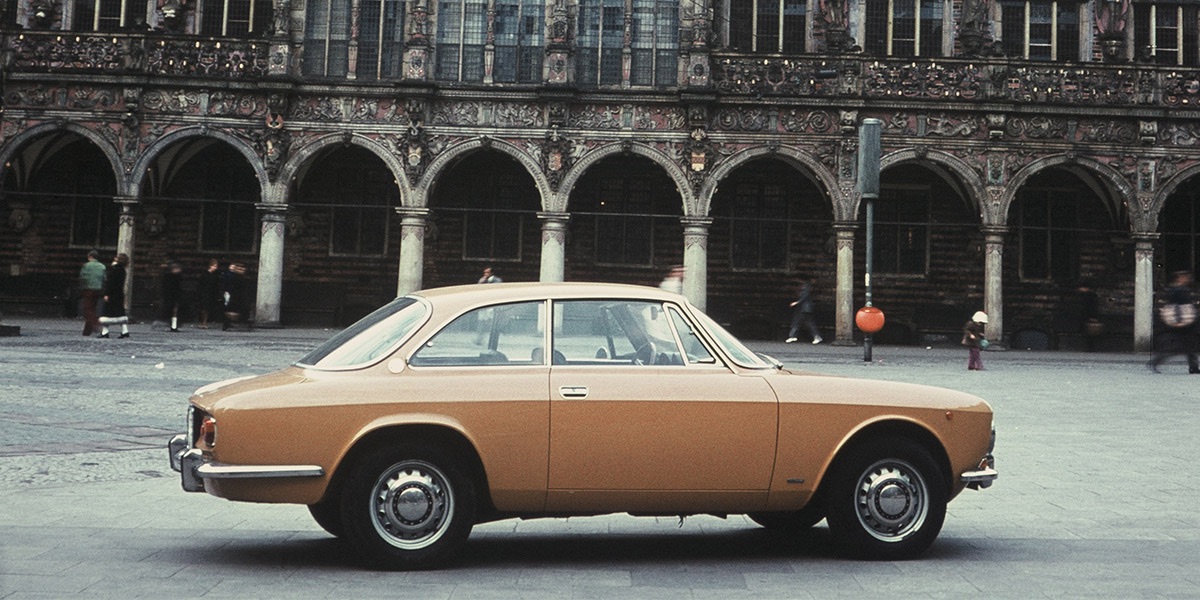Jeremy Clarkson stands as a towering figure in automotive journalism, renowned and debated for his impactful statements. Throughout his career, this British icon has consistently claimed that true car enthusiasts haven't earned their stripes until they've owned an Alfa Romeo. But which Alfa Romeo model is the right choice? Consider the 164, an executive sedan designed by Pininfarina, featuring the melodious Busso V6 engine—a stellar option indeed. For those craving the sensation of the breeze through their hair, the Alfa Romeo Spider offers various models spanning three decades. Both models are commendable choices; however, today, we're highlighting another compelling Alfa Romeo—the Giulia GT, presenting a strong argument in its favor.
What sets the Giulia GT apart as the epitome of Alfa Romeo's legacy? It's the perfect blend of a responsive chassis, a spirited engine, and timeless design that captivates from every perspective. While opinions may vary, the dual headlight front crafted by Giugiaro for the Giulia GT stands unparalleled in automotive beauty, arguably the most stunning car facade ever created. Yet, its aesthetic appeal doesn't overshadow its mechanical prowess. Even in 1963, the GT models boasted dual-cam engines, four-wheel disc brakes, and five-speed transmissions—a remarkable feat for the compact RWD coupe derived from the standard Giulia saloon.
The Giulia Sprint GT initially hit the market with a 1600 cc inline-four engine, delivering 105 bhp—a power output that's more than adequate considering the coupe's sub-ton weight. Quickly, the Sprint GT eclipsed other Giulia models in popularity, leading Alfa Romeo to expand the GT lineup further. This expansion not only solidified the Giulia GT's place in automotive history but also underscored Alfa Romeo's commitment to combining performance with elegance.
Throughout its production span, the Giulia GT was offered in numerous variations, all powered by Alfa Romeo's iconic Nord four-cylinder engine, with displacements ranging from 1.3 to 2.0 liters. The more compact models, charmingly branded as "Junior," offered a more accessible entry point in terms of both purchase price and operational costs. At the higher end, the Veloce variants came equipped with more robust engines, either a 1.8-liter (1750 GTV) or a 2.0-liter (2000 GTV) powerplant. Notably, the 2000 GT Veloce model could be enhanced with a limited-slip differential, a feature that invited drivers to experience controlled slides with ease.
Yet, the ultimate expression of the Alfa Romeo Giulia's potential for agility was not found in its standard versions. Alfa Romeo leveraged the Giulia's adept chassis for competitive motorsport through Autodelta, the brand's esteemed racing division. This collaboration birthed the Giulia Sprint GTA, with the "A" denoting "Alleggerita," translating to "lightened" in Italian. The introduction of the GTA 1300 Junior further expanded Alfa's presence in motorsport, specifically targeting the sub-1300cc class. The "Alleggerita" moniker was far from a mere branding exercise; Autodelta undertook extensive modifications to earn it. These GTAs were outfitted with aluminum body panels, minimalist interiors, Perspex windows, magnesium alloy wheels, and in certain instances, even featured hollow driveshafts and gearbox elements. These enhancements resulted in a weight reduction of nearly 200kg from an already lightweight framework. To further refine its performance, the GTA engines were equipped with Webber carburetors, high-capacity heads with aggressive camshafts, and a twin-spark ignition system. Remarkably, Alfa Romeo made these extensively modified coupes available for both racing (Corsa) and road (Stradale) purposes. Imagine the thrill of running daily errands or dropping your kids off at school in a vehicle with the soul of an Italian touring car.
The price of Alfa Romeo Giulia GT
The Giulia GT enjoyed a production run spanning 14 years, concluding in 1977, with only minor modifications made throughout its lifecycle. This longevity in production means there's a healthy selection available for potential buyers. However, given their esteemed status among driving aficionados and collectors, acquiring one comes at a significant cost. Prices for a well-maintained GT start at around EUR 30,000, with a genuine GTA commanding prices that can reach up to ten times that figure.
---
Discover your dream car within our Car Categories, or explore our Classic Passion Shop to uncover thrilling items from our associates!










